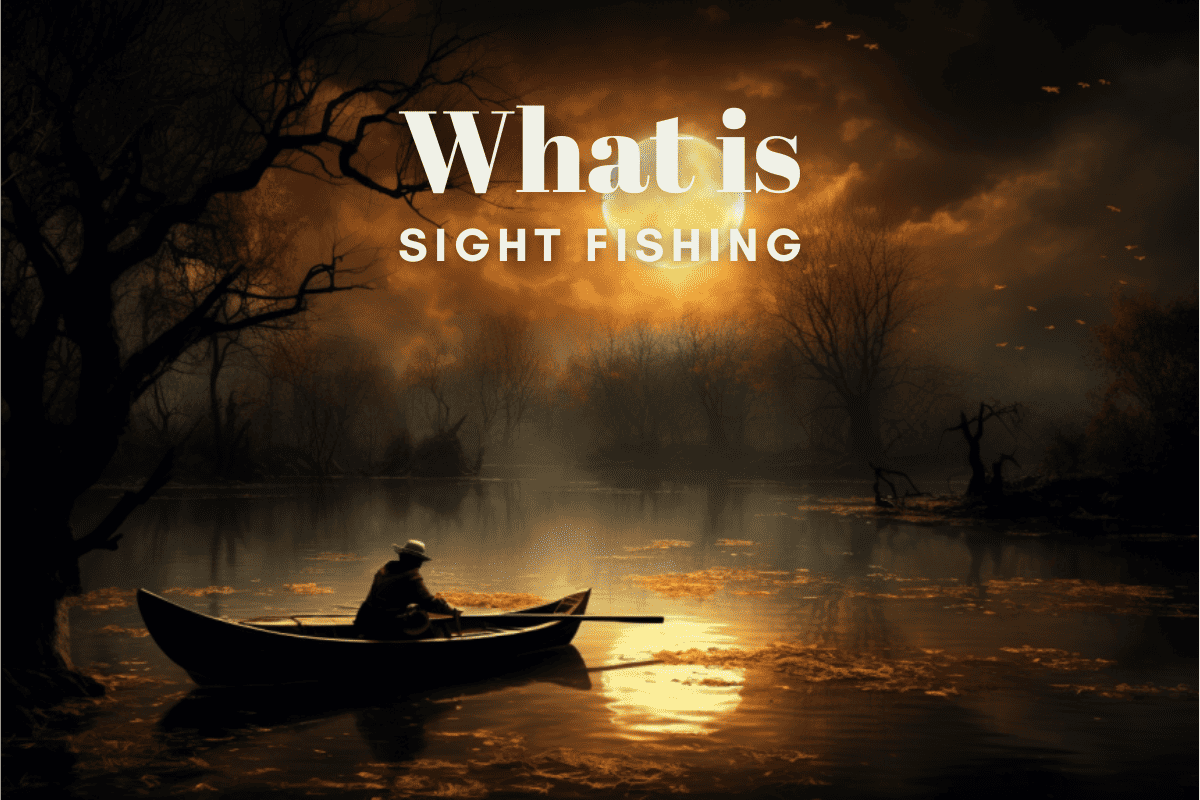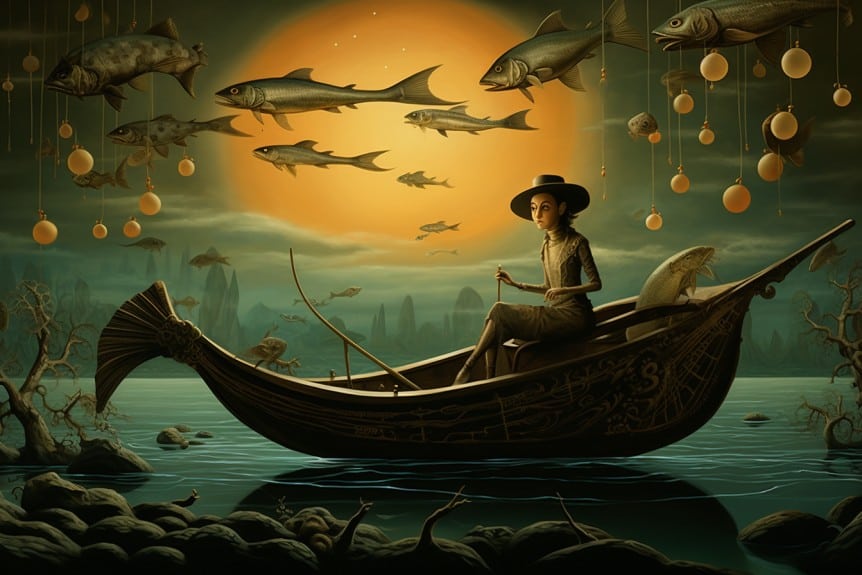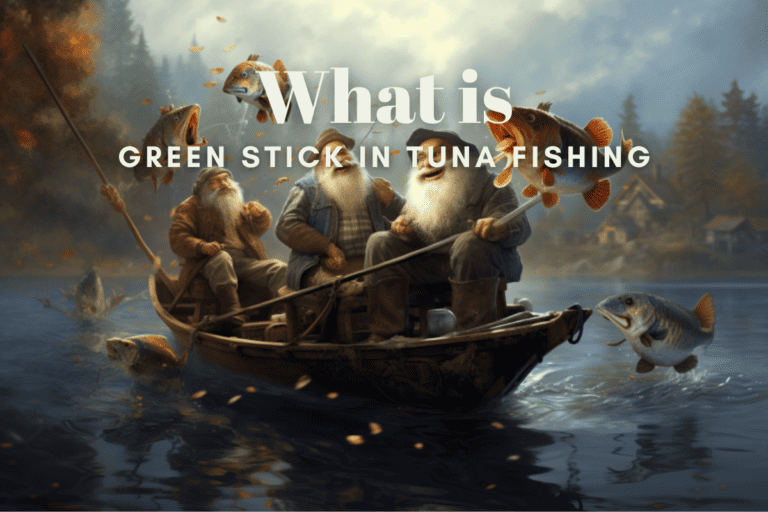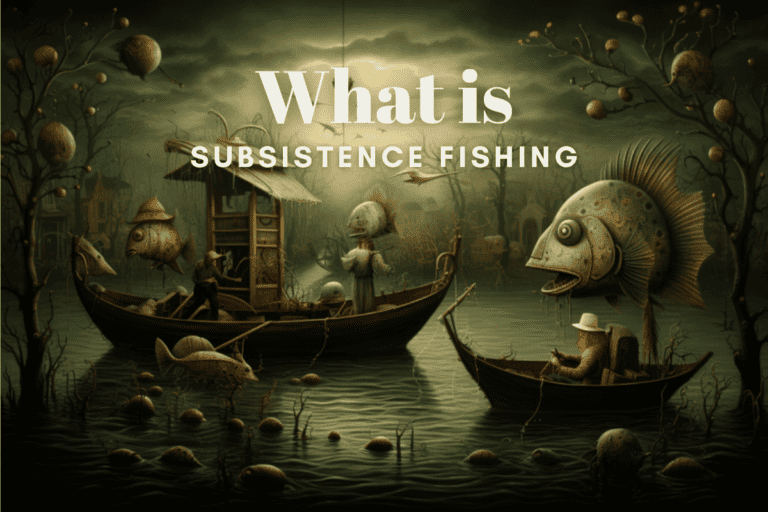What is Sight Fishing? Sight Fishing Techniques

While many believe fishing is a sport of luck, it’s actually an art, requiring skill and strategy.
Sight-fishing, for instance, isn’t about casting blindly and hoping for a bite. It’s about spotting the fish first, understanding its behaviors, and then enticing it to bite. It’s a challenging yet rewarding technique that’s won the hearts of many anglers.
This article will guide you through the exciting meaning of the fishing term sight-fishing, offering tips and tactics to enhance your angling experience.
What is Sight Fishing?
In the art of sight-fishing, it’s essential to understand the basics: spotting the fish first, enticing it with a fly, bait, or lure, and knowing it’s not just rewarding, but also an incredibly enjoyable technique.
Sight fishing is an angling technique where anglers visually locate and target individual fish or schools of fish in clear water before casting their bait or lure.
It’s about being one with the water, blending in, and becoming a part of the fish’s world. You’re not just an observer; you’re actively participating in the aquatic dance.
It’s a thrill to spot a fish and coax it to bite. Whether it’s a bass in freshwater or a snook in saltwater, the satisfaction of a successful catch is inarguable.
But it’s not just about the catch; it’s about the camaraderie, the shared stories, and the sense of belonging to a community of anglers. Sight-fishing isn’t just a skill; it’s a lifestyle.
And once you’re hooked, you’re part of the family.
Site Fishing Tips: Improve Your Sight Fishing
Sight fishing, the art of visually spotting and targeting fish, offers a unique and interactive angling experience. However, it requires a blend of observation, stealth, and precision. To truly master this technique, consider the following tips and strategies:
- Invest in Polarized Sunglasses: These are a sight fisher’s best friend. Polarized lenses reduce the glare from the water’s surface, allowing you to see deeper and spot fish with greater clarity. They also protect your eyes from harmful UV rays.
- Adopt a Stealthy Approach: Fish can be easily spooked by sudden movements or shadows. Approach your fishing spot slowly and quietly. If wading, tread softly and avoid making splashes.
- Elevate Your Perspective: The higher your vantage point, the better you can see into the water. If you’re on a boat, consider using a casting platform. For shore fishing, look for natural elevations like rocks or dunes.
- Choose the Right Line: Clear or low-visibility fishing lines are ideal for sight fishing. They’re less likely to be detected by fish, increasing your chances of a successful catch.
- Observe Fish Behavior: Take time to study the fish. Notice how they react to different lures or baits, their feeding patterns, and their movement paths. This observation can provide valuable insights into their behavior and preferences.
- Practice Precision Casting: In sight fishing, where you cast matters immensely. Practice your casting skills to ensure you can place your lure or bait accurately, without startling the fish. Remember, sometimes it’s not about casting directly at the fish but leading them slightly.
- Use Appropriate Lures: Depending on the clarity of the water and the species you’re targeting, you might need to adjust your lure choice. In clear waters, opt for more natural and subtle lure colors.
- Stay Patient: Sight fishing often requires more patience than other forms of angling. You might spend a lot of time observing and waiting for the perfect opportunity. Embrace the process and enjoy the thrill of the hunt.
- Learn from Experience: Every sight fishing trip offers lessons. Whether you land a big catch or face challenges, reflect on your experiences, and adapt your strategies accordingly.
Sight fishing is as much about strategy and observation as it is about angling skills. By honing your techniques, investing in the right gear, and cultivating patience, you can elevate your sight fishing game and experience the unparalleled joy of visually hunting and catching fish.
The Thrill of Sight-Fishing for Bass
Spotting bass in the shallows and enticing them to bite is an experience that’s both captivating and unforgettable. It’s a thrill that unites anglers, creating a sense of camaraderie and shared passion.
This practice, sight-fishing for bass, is a challenging but rewarding pursuit. It’s about more than just the catch; it’s the anticipation, the strategy, the connection with nature that makes it truly special. One can’t help but feel a part of something larger.
It’s not just about the fish, it’s about belonging to a community of anglers who appreciate the skill and patience required. Sight-fishing for bass is a tradition, a shared experience that fosters a sense of belonging.
It’s an art, a science, and a social bond that keeps anglers returning for more.
Exploring Saltwater Sight-Fishing
Saltwater presents its own unique set of challenges and thrills for those who love to fish. Sight-fishing in this environment isn’t just about skill, it’s about joining an exclusive club of anglers who’ve mastered the art.
It’s a different game altogether, chasing fast-moving schools of jack crevalle or sneaking up on tailing snook. But the rewards? They’re unparalleled. There’s nothing quite like the adrenaline rush when a fish you’ve spotted takes your bait.
And if you’re partial to a fly rod, you’re in for a treat. The thrill of sight-fishing in saltwater is something that’ll get under your skin, it’ll become a part of you. And once you’re in, there’s no turning back.
Welcome to the club!
Identifying Ideal Locations for Sight-Fishing

Finding the perfect location for this thrilling activity requires a keen understanding of the aquatic environment and the habits of various fish species. Visibility is key when sight-fishing. Clear, shallow waters are ideal, where fish are easily spotted. Certain species, like bass, are more likely to be found in these areas during spawning season.
However, don’t overlook the challenge of saltwater locales. There, you’ll find a variety of species darting through the waves. The trick is to anticipate their movements.
And remember, the beauty of sight-fishing is that it’s not always about the catch. It’s about the camaraderie, the shared understanding, and the thrill of the hunt.
Final Thoughts
In conclusion, sight-fishing is an art that’s as rewarding as finding a hidden treasure. It’s an exhilarating blend of patience, stealth, and understanding of fish behavior.
With the thrill of spotting your prey before the catch, it’s no wonder this technique has lured in many anglers, making fishing not just about the catch, but the whole captivating process.
Frequently Asked Questions (FAQ)
Q: What is sight fishing?
A: Sight fishing is a technique that involves spotting fish in the water and targeting them visually rather than relying solely on bait or lures. It requires the ability to see the fish and cast your line directly towards them.
Q: How does sight fishing work?
A: Sight fishing involves spotting fish in the water, usually in shallow areas or on the surface, and then casting your bait or lure towards them. It allows you to target specific fish and increases your chances of catching them.
Q: What are some tips to help improve your sight fishing?
A: To improve your sight fishing skills, it is important to wear polarized sunglasses to reduce glare and improve visibility in the water. Additionally, learning to spot fish and understanding their behavior can greatly enhance your chances of success.
Q: What types of fish can be targeted with sight fishing?
A: Sight fishing can be used to target a variety of different fish species, including redfish, trout, bass, and other game fish. It is particularly popular in areas like the Gulf Coast where these species are abundant.
Q: What equipment do I need for sight fishing?
A: The equipment needed for sight fishing depends on the type of fishing you plan to do. In most cases, you will need a fishing rod and reel, as well as appropriate bait or lures. Polarized sunglasses are also essential for improving visibility in the water.
Q: Can I sight fish from a kayak?
A: Yes, sight fishing can be done from a kayak. In fact, many anglers find that kayaks offer a great vantage point for spotting fish in shallow water. Just make sure to approach the fish quietly to avoid spooking them.
Q: Does sight fishing only work in shallow water?
A: While sight fishing is commonly associated with shallow water, it can also be done in deeper water. However, spotting fish in deeper water may be more challenging, so it is important to develop your skills and learn to identify fish behavior patterns.
Q: Can sight fishing be done with fly fishing?
A: Yes, sight fishing can be done with fly fishing. In fact, many fly fishermen prefer sight fishing because it allows for precise casting and targeting of specific fish. Just make sure to match your fly pattern to the type of fish you are targeting.
Q: How can sight fishing improve my chances of catching fish?
A: Sight fishing allows you to target individual fish and present your bait or lure directly in front of them. This increases your chances of a successful hook-up as the fish are more likely to see and strike at your offering.





